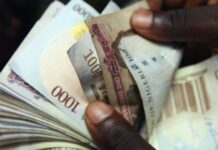Currency in circulation rose by 4.58% from N2.84tn in September to N2.97tn in October, the Central Bank of Nigeria (CBN) has revealed.
According to data from the apex bank, this led to a N129b increase.
In August, the currency in circulation dropped to N2.78tn from N2.81tn in July. In June, it stood at N2.74tn, while in May, N2.79tn.
It stood at N2.79tn in April and N2.8tn in March resulting to N2.78tn and N2.83tn in February and January respectively.
According to the CBN, the currency in circulation had increased by N465.47b or 19.06 percent, from N2.44tn in 2019 to N2.91tn in 2020.
“In 2020, there were higher withdrawals by DMBs than deposits, due to the panic need to hold cash to deal with the emergencies and reduced banking hours due to restrictions to curb spread of the pandemic,” the bank said.
The apex bank said it developed and unveiled a clean note policy and banknote fitness guidelines in 2018 to preserve public trust and maintain the quality of circulated notes in the economy.
The guidelines provide a blueprint of quarterly and yearly activities to ensure that this objective was achieved.
According to the apex bank, the policy provides that every newly printed and existing banknotes should measure up to predefined standards before circulation and re-circulation in the economy.
The CBN said it used the “accounting/statistical/withdrawals and deposits approach” to compute the currency in circulation in the country.
It said this approach involved tracking the fluctuations in currency in circulation on a transaction-by-transaction basis.
Furthermore, the CBN said, for every withdrawal made by a deposit money bank (DMB) at any CBN branch, an increase in currency in circulation (CIC) is recorded; and for every deposit made by a DMB at one of CBN’s branches, a decrease in CIC is recorded.
The transactions are all recorded in the CBN’s CIC account, and the balance on the account at any point in time represented the country’s currency in circulation.











